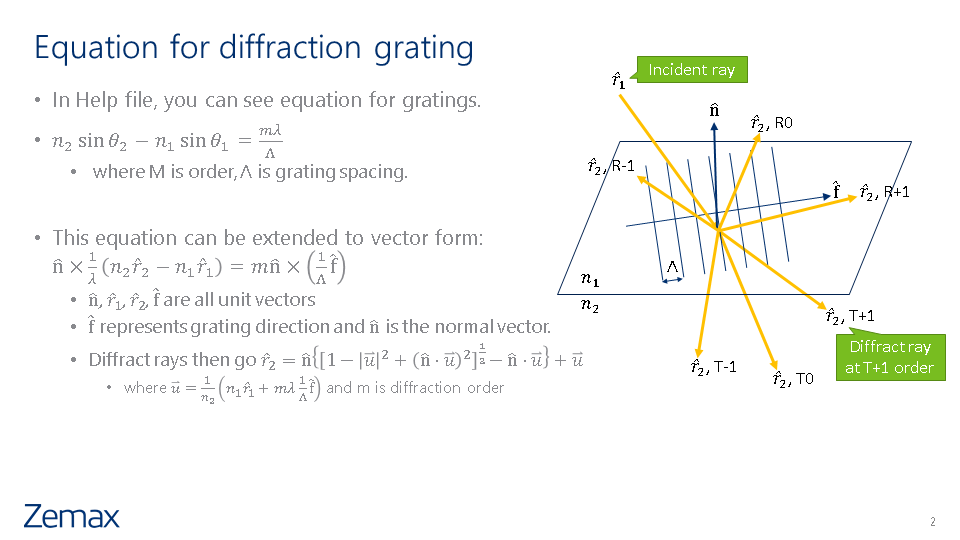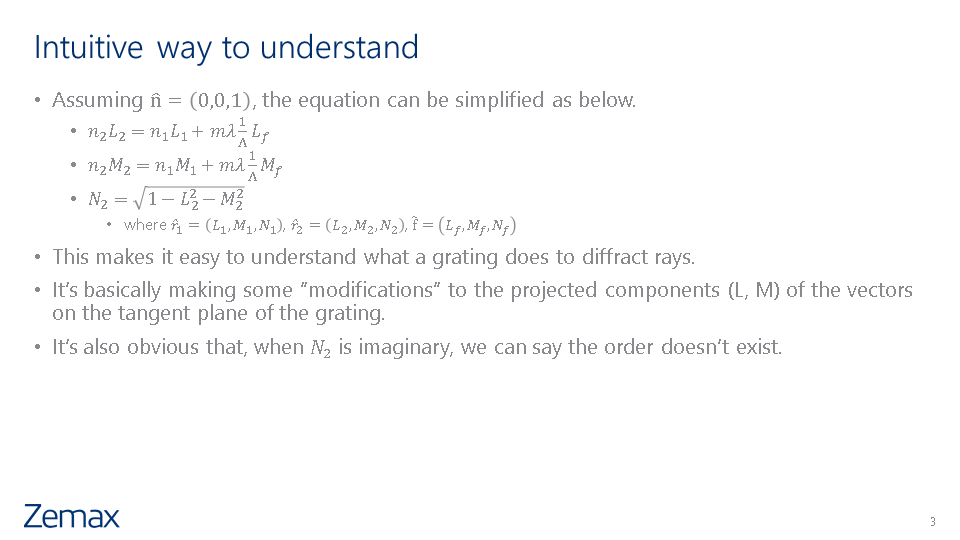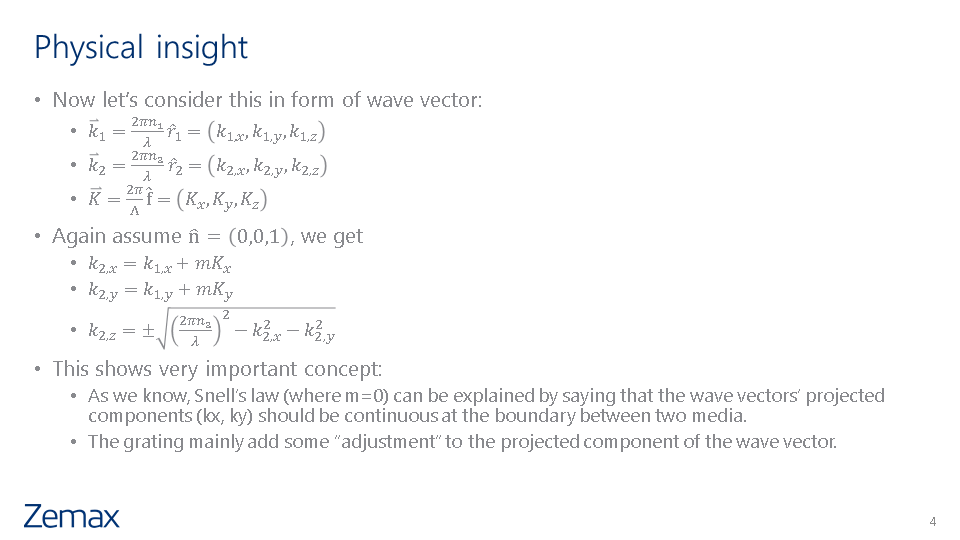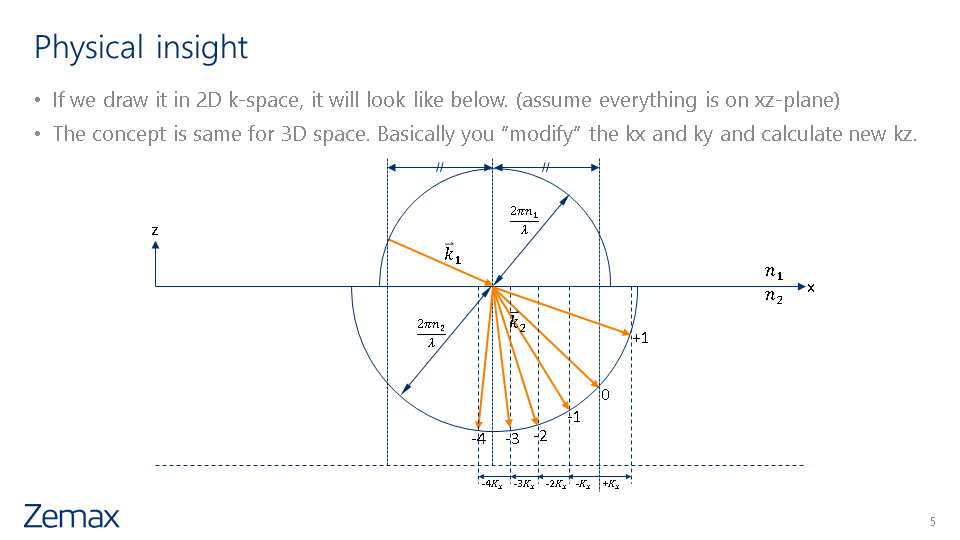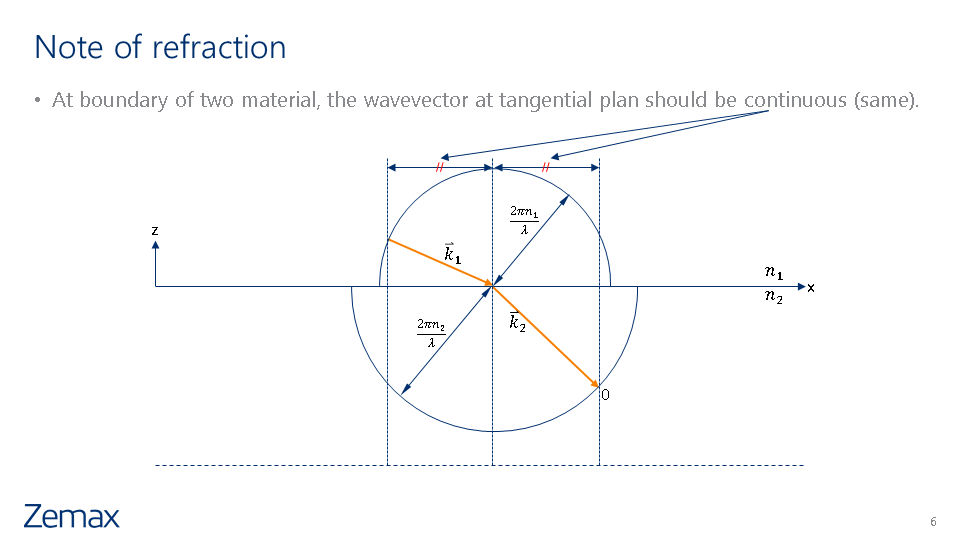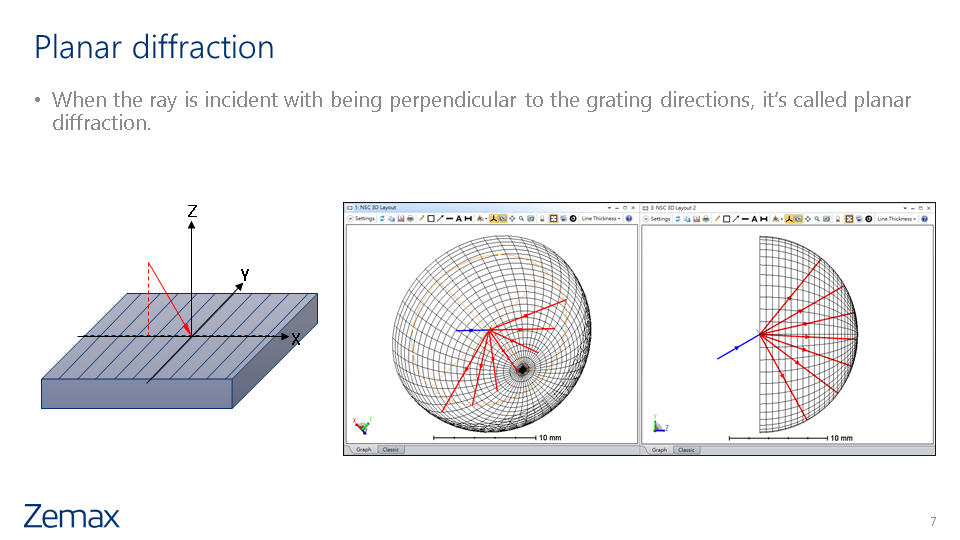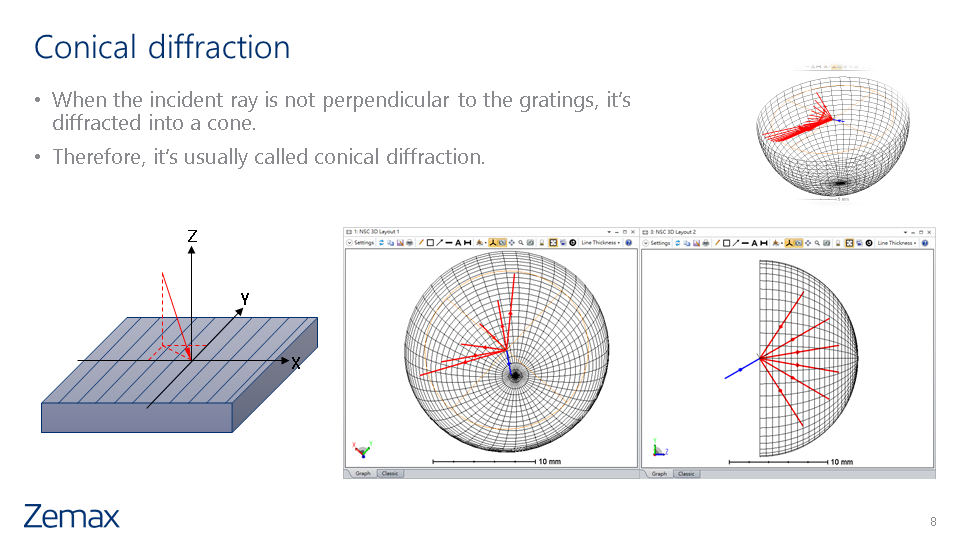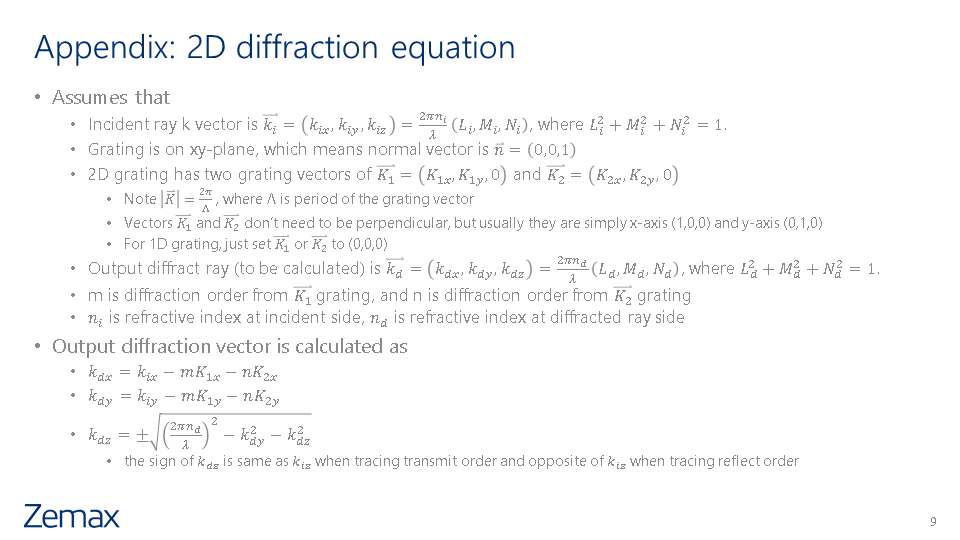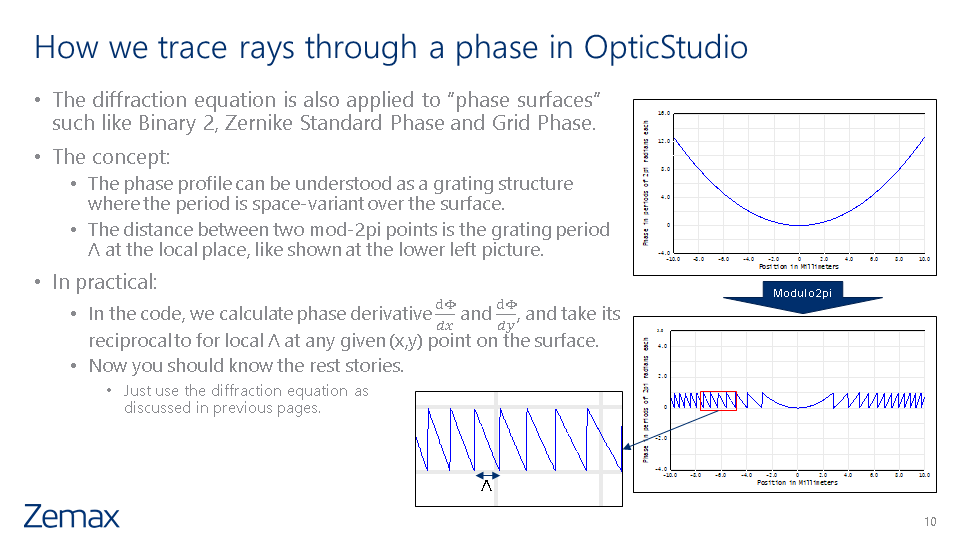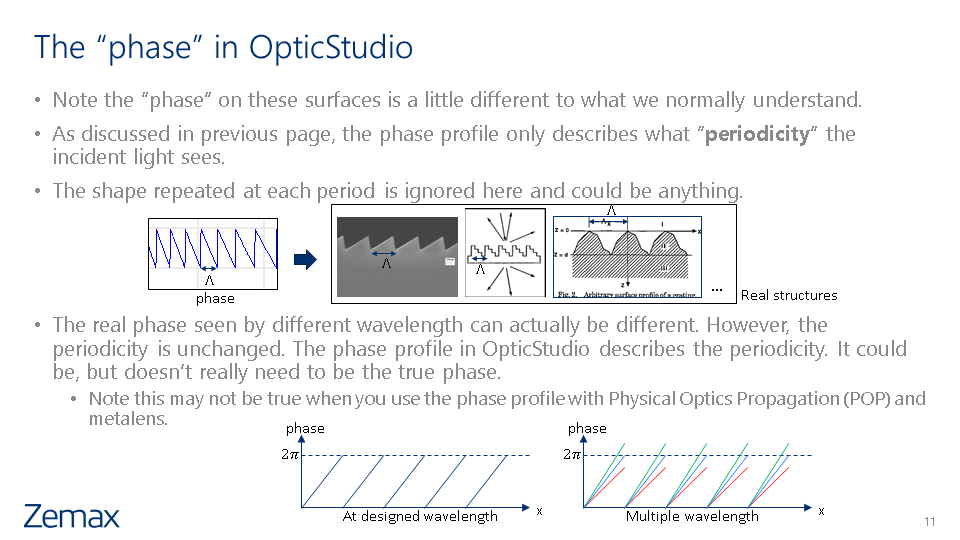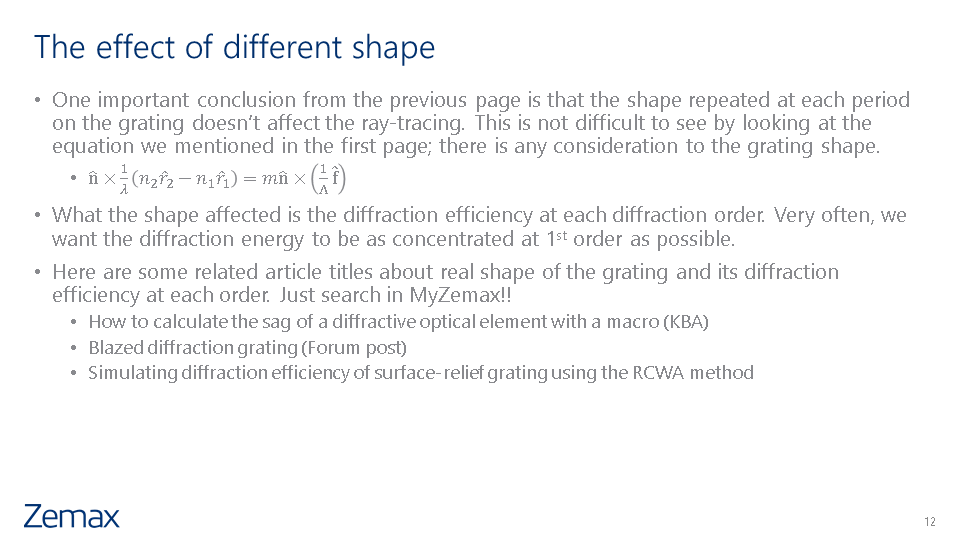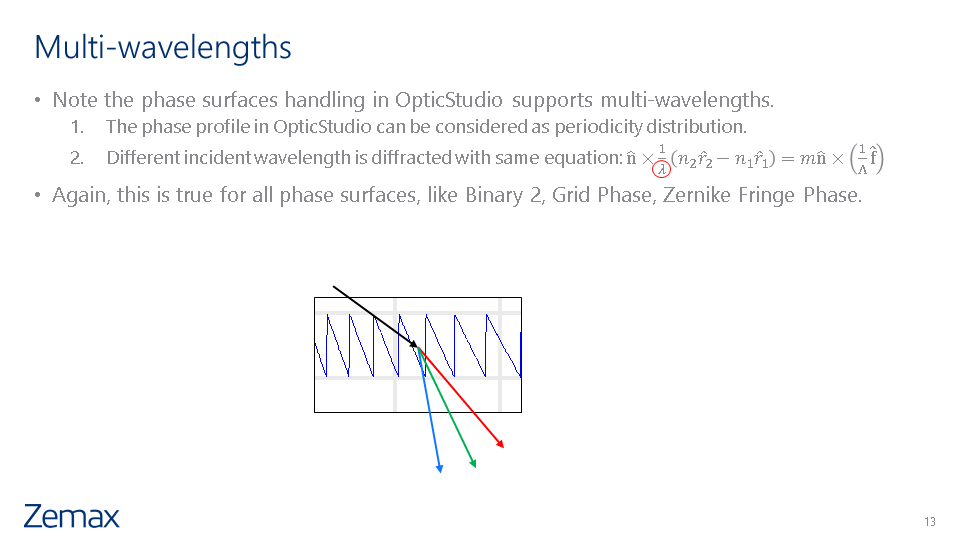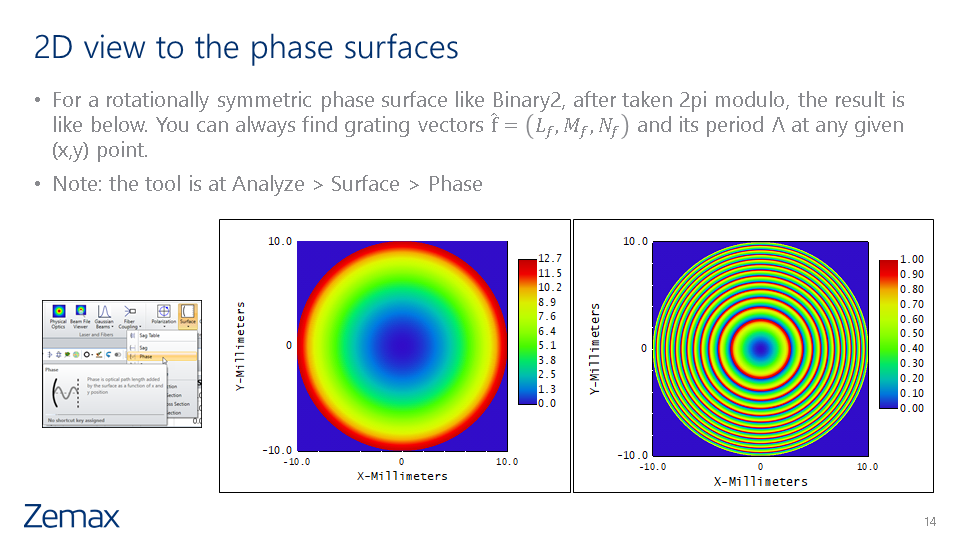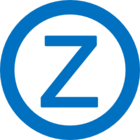That's try to check math/eqaution details about how diffraction is calculated for ray-tracing.
Here is some key points for taking back:
- The ray-tracing eqaution for grating and any phase profile are same.
- They are all based on the principle that projected wave vector should be continuous at material boundaries.
- The word 'conical diffraction' is explained.
- The 'phase' in OpticStudio mainly describes 'periodicity'.
- These diffraction calculation supports multiple-wavelength
- This is true for all diffractive surfaces like: Binary 2, Zernike Standard Phase, Grid Phase, Diffraction Grating, Elliptical Grating, ... etc.
- For Physical Optics Propagaion (POP) and metalens, the support to multi-wavelength for phase surfaces may be no longer true, but we don't discuss much here.

